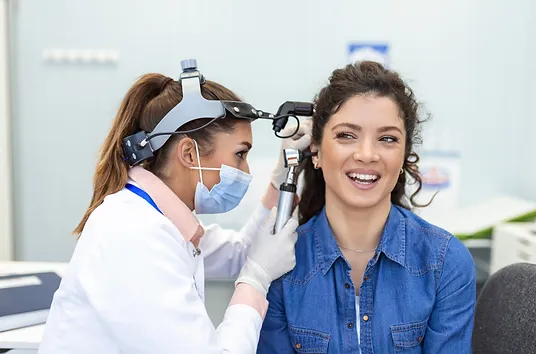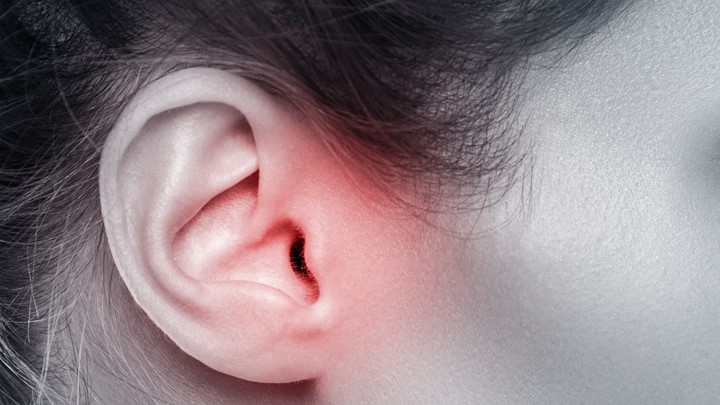Importance of earwax removal
Earwax removal is an important aspect of ear care and can have several benefits. While earwax, also known as cerumen, is a natural substance produced by the body to protect the ear canal, an excess build-up of earwax can lead to various issues. Here are some reasons why earwax removal is important:
- Hearing: A build-up of earwax can block the ear canal, causing temporary hearing loss or a reduction in hearing ability. Removing the excess wax can improve hearing and restore the normal functioning of the ear.
- Prevention of infections: Accumulated earwax can create a favorable environment for the growth of bacteria or fungi, increasing the risk of ear infections. By removing the wax, you can reduce the chances of developing such infections.
- Discomfort and pain relief: Excessive earwax can cause discomfort, itching, or pain in the ear. By removing the blockage, you can alleviate these symptoms and restore comfort.
- Tinnitus management: Tinnitus is a condition characterized by the perception of ringing or buzzing sounds in the ears. Sometimes, impacted earwax can contribute to tinnitus. Removing the wax may help reduce the intensity or frequency of tinnitus symptoms.
- Facilitating ear examination: When earwax obstructs the ear canal, it can make it difficult for healthcare professionals to examine the ear during routine check-ups. Clearing the wax allows for better visualization and assessment of the ear’s health.
It’s important to note that while earwax removal is beneficial, it should be done properly and with caution. Inserting objects such as cotton swabs or other instruments into the ear canal can push the wax further inside or cause damage to the ear. It is advisable to seek professional help from a healthcare provider, such as an ear, nose, and throat specialist or a trained audiologist, for safe and effective earwax removal methods.

Signs and Symptoms of Earwax Buildup
Earwax buildup, also known as impacted earwax or cerumen impaction, can cause various signs and symptoms. Here are some common indicators that you may have excessive earwax:
- Earache: A feeling of discomfort or pain in the ear can be a sign of earwax buildup. The wax can create pressure on the eardrum or irritate the ear canal, leading to pain.
- Decreased hearing: If you notice a sudden or gradual reduction in your hearing ability, it could be due to earwax accumulation. The wax can block the ear canal, impeding sound waves from reaching the eardrum properly.
- Tinnitus: Tinnitus refers to the perception of ringing, buzzing, or other phantom sounds in the ears. Excessive earwax can contribute to the development or worsening of tinnitus symptoms.
- The feeling of fullness: Individuals with earwax buildup often describe a sensation of fullness or blockage in the affected ear. It may feel as if the ear is clogged or stuffed with something.
- Itching or discomfort: Impacted earwax can cause itchiness or a general sense of discomfort in the ear canal. This can be accompanied by a sense of pressure or aching.
- Dizziness or vertigo: In some cases, a large amount of earwax can affect the vestibular system, which is responsible for maintaining balance. This can lead to symptoms of dizziness or a spinning sensation (vertigo).
- Coughing or odor: In rare instances, if earwax becomes infected, it may result in a foul smell emanating from the ear or even cause a cough due to stimulation of the cough reflex.
It’s worth noting that some of these symptoms can also be associated with other ear conditions or health issues, so it’s essential to consult a healthcare professional for an accurate diagnosis. They can examine your ears and determine whether earwax buildup is the cause of your symptoms.
Safe Methods for Earwax Removal
When it comes to removing earwax, it’s crucial to follow safe methods to avoid injury to the ear canal or eardrum. Here are some safe methods for earwax removal:
- Do nothing: In many cases, the ear can naturally eliminate excess earwax on its own. The movement of the jaw during talking or chewing helps to push the wax out of the ear canal. Simply allowing time for the wax to naturally migrate out of the ear can be an effective and safe approach.
- Over-the-counter ear drops: Earwax softening drops, available at pharmacies, can be used to soften the wax and make it easier to remove. Follow the instructions provided with the drops, and be sure to use them as directed.
- Warm water irrigation: Using a bulb syringe or specialized ear irrigation kit, you can gently flush warm (not hot) water into the ear canal to help dislodge and remove the softened earwax. Tilt your head to the side and aim the water towards the side of the ear canal, avoiding direct contact with the eardrum.
- Mineral oil or baby oil: Applying a few drops of mineral oil, baby oil, or glycerin into the ear canal can help soften the wax over a few days. This method can be particularly useful for individuals with dry earwax.
- Seek professional help: If you’re uncertain about removing the earwax or if your symptoms persist or worsen, it is advisable to seek assistance from a healthcare professional. An ear, nose, and throat specialist (otolaryngologist) or a trained audiologist can safely remove the earwax using specialized instruments and techniques.
It’s important to note that inserting cotton swabs, bobby pins, or other objects into the ear canal is not recommended as it can push the wax deeper, cause injury to the ear, or even damage the eardrum. These objects may also disrupt the natural cleaning process of the ear and increase the risk of complications.
Always exercise caution when attempting to remove earwax, and if you have a history of ear problems, consult a healthcare professional for guidance on the best ear wax removal method for your specific situation.
Tips for Home Earwax Removal
While it’s generally recommended to seek professional help for earwax removal, there are some home remedies that can be tried under certain circumstances. Here are some tips for home earwax removal, keeping in mind the importance of being cautious and gentle:
- Softening with drops: You can use over-the-counter earwax softening drops, hydrogen peroxide, mineral oil, baby oil, or glycerin. Follow the instructions provided with the drops and place a few drops into the affected ear. Allow the drops to sit in the ear for several minutes to soften the wax.
- Flushing with warm water: After using earwax softening drops, you can try gently flushing the ear with warm water using a bulb syringe or an ear irrigation kit. Fill the syringe or irrigation kit with warm (not hot) water and position yourself over a sink or basin. Tilt your head to the side, straighten the ear canal by gently pulling the outer ear backward and upward, and slowly squirt the water into the ear canal. This can help dislodge and flush out the softened wax. Avoid using excessive force or pushing the water directly against the eardrum.
- Gravity-assisted removal: If you have softening drops in your ear, you can lie on your side with the affected ear facing downward. The wax may gradually drain out on its own due to the force of gravity. Place a towel or tissue under your ear to catch any liquid or wax.
- Ear irrigation with bulb syringe: Fill a bulb syringe with warm water and gently squirt the water into the ear canal while keeping your head tilted to the side. This can help dislodge the wax, but it’s important to be gentle and avoid applying too much pressure.
- Avoid using cotton swabs or objects: It’s important to avoid inserting cotton swabs, bobby pins, or any other objects into the ear canal. These can push the wax deeper, cause injury, or damage the eardrum.
- Know when to seek professional help: If the earwax does not come out after home remedies, or if you experience severe pain, persistent symptoms, hearing loss, dizziness, or any other concerning symptoms, it’s important to seek professional help from a healthcare provider.
Remember, home remedies should be used with caution and only in situations where you are confident and comfortable. If you’re unsure or if your symptoms persist, it’s always best to consult a healthcare professional for guidance and safe earwax removal.


